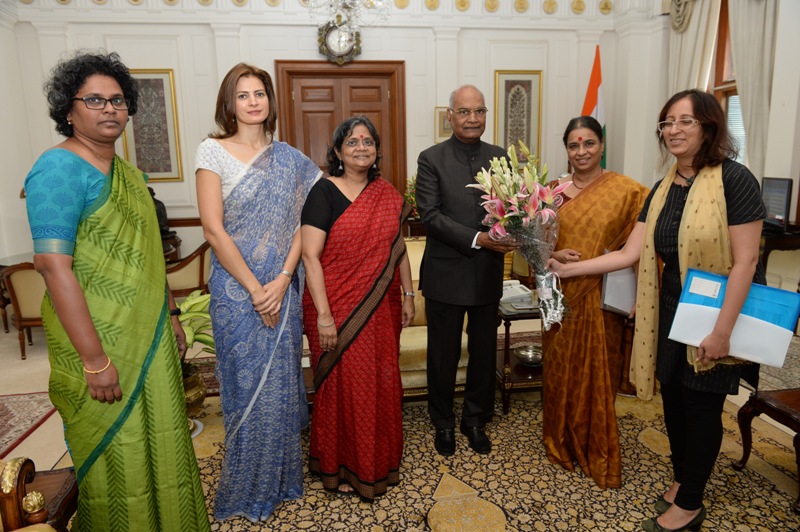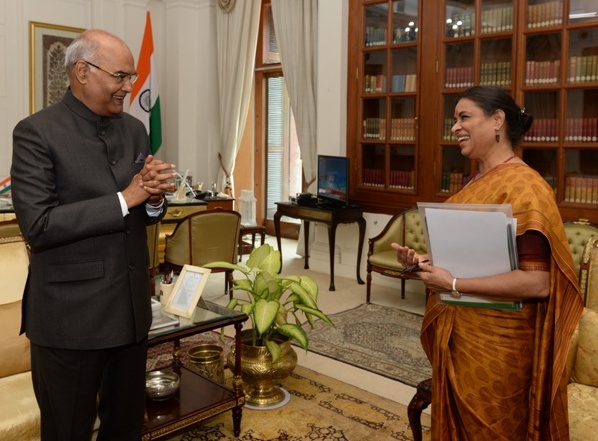On Tuesday, 29th August, a five member delegation led by Dr. Ranjana Kumari, had the honour of meeting the President of India, Shri Ram Nath Kovind, at Rashtrapati Bhavan.The delegation included Ms Ranu Kayastha Bogal (Director – Policy, Research & Campaigns, Oxfam India), Ms Sara Pilot (Director, Centre for Equity and Inclusion, CEQUIN), Ms Vinodhini Moses (National General Secretary, YWCA India) and Ms Gayatri (Women Power Connect).


The meeting was to congratulate him, along with discuss with him the pending status of the Women’s Reservation Bill. The President shared our concern, and assured the delegation of his support.


To recapitulate the journey of this protest, let us take a step back in time. The history of women’s reservation began in the 1980s with the Karnataka Zilla Parishads, Taluk Panchayat Samitis, Mandal Panchayats and Nyaya Panchayats Act, 1983, reserving 25% seats for women, making it the first state to do so. At that time, many seats went vacant due to less number of candidates. In 1987, roughly three women contested for one seat when the elections were held in 1987. Orissa implemented 33% reservation much before the 73rd Constitutional Amendment. It also decided that if a sarpanch (elected or nominated) was a man, then his deputy will be a woman.
The 64th and 65th constitutional amendments that Prime Minister Rajiv Gandhi introduced in Parliament on May 15, 1989, reserved 30% seats for women. But the Bills were defeated in the Rajya Sabha. Finally, the Narasimha Rao government passed the Bill. In the 72nd and 73rd constitutional amendments introduced in September 1991 (which became the 73rd and 74th in 1992), the reservation did not go up further; it remained at 33%. In 1993, it became part of the Constitution. Thanks to the amendments, women joined politics in large numbers, changing the scope of political debate and ideas like gender-budgeting were popularised.
Bihar took a step forward in 2009 by reserving 50% seats for women in local governments. Seventeen other states followed. But attempts to introduce 33% reservation for women in Parliament have failed. In 1996, the 81st constitutional amendment Bill for 33% seats for women in Parliament was introduced in the Lok Sabha. It was reintroduced in 1998 as the 84th amendment and again in 1999. In 2003, the Bill failed to clear the House twice. Finally, in 2010 it was passed in the Rajya Sabha but as of 2016, it is still pending in the Lok Sabha.
The WRB was passed by the Upper House (Rajya Sabha) of Parliament on 9th March 2010, but for it to be converted into an act, it must be passed by the Lok Sabha and signed by the Honourable President. As part of the National Alliance for Women’s Reservation Bill, along with various other organizations, Centre for Social Research has been actively pursuing the passage of the WRB in the Lok Sabha. We have organized many rallies, press conferences and meetings with various political leaders on this subject. We have also gone to several parts of the country, and mobilized women at the panchayat level, who also want quick passage of this bill.




